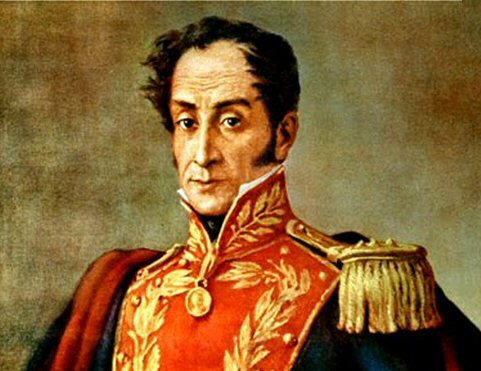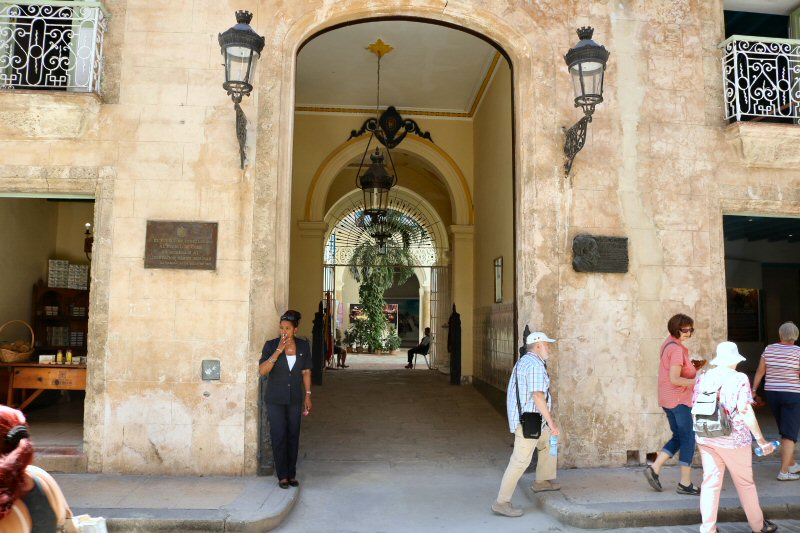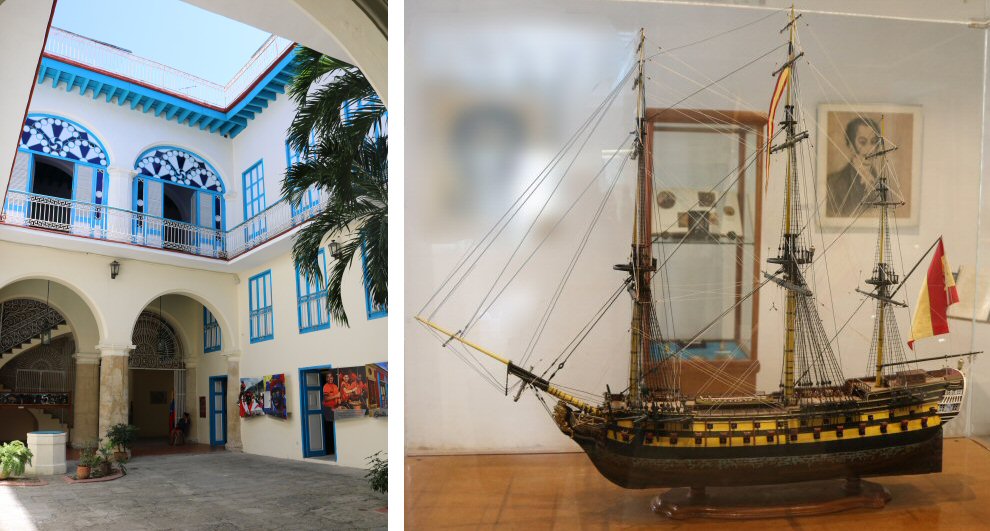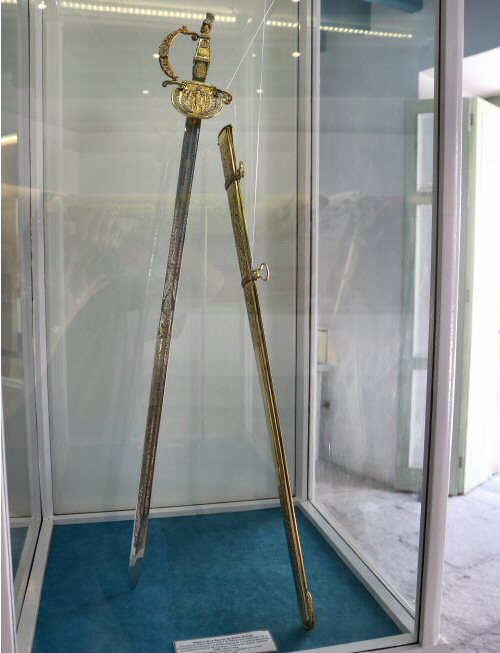
HISTORY
The Casa de Simón Bolívar is a
neoclassical house, built between 1806 and 1817. Marquesa de
Aguas Claras, Countess of Villanueva, was one of its principal
owners, and the building was used for multipurpose, such as
warehouse, small business, printing house, and also as
residence, shared by 24 families that live in this fractioned
house. It was inaugurated as the Casa Museo de Simón Bolívar in
1993, on the day coinciding with the birth date of Simón Bolívar
(1783-1830), as he had stayed in this house during his visit to
Cuba in March 1799. The diminutive museum that was dedicated to
Latin America’s liberator, was established by the Venezuelan
government. The essential objectives in opening such a museum
were the dissemination of Bolívar’s thought that remained as a
perennial hero for most of the Cubans, and the promotion of the
cultural exchange between the two Latin American countries
The Casa de Simón Bolívar is located on
the Mercaderes street #156, between the Obrapia and the
Lamparilla streets, 50 meters south to the Plaza de Simón
Bolívar.
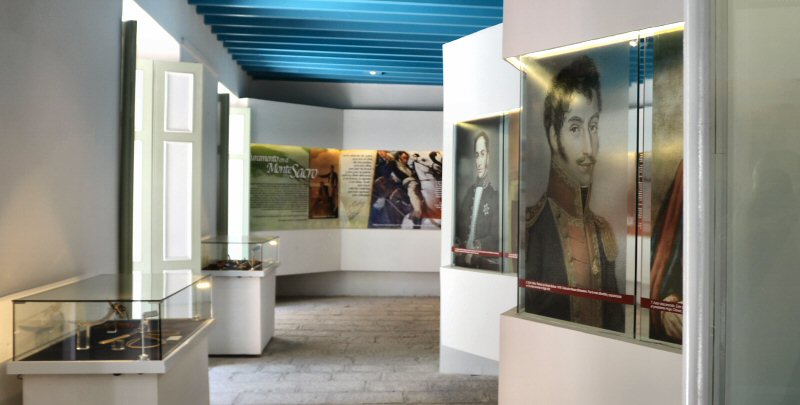
THE MUSEUM
The walls of the ground floor are
covered with various pictures of Simón Bolívar. A short summary
of some important events in his life is given on the panels in
English, French and Spanish. In the showcases you can see some
of his medals, a coin minted to his honor and two documents,
signed by Bolívar. The replica of the sword that was given to
him in Peru in 1825, stands out. Its original is preserved in
the Central Bank in Caracas. The model of the ship San Idelfonso
with which Bolívar wanted to call on Cuba, but couldn’t do it
because of the English blockade at the port of Havana, and the
model of the school ship with his name are also displayed on the
ground floor.
The upper floor can be accessed by a
curved, marble stairs with iron banister and has splendid
tinted-glass windows in blue and white that looks down to the
wide patio. This floor contains some contemporary Venezuelan and
Latin American paintings and sculptures, among which the
charcoal portrait of Manuela Sáenz, made by the
Venezuelan artist Azalea Celenia Quiñónes, and her bust, the
work of the Cuban ceramist Carlos Planas, stand out. Manuela
Sáenz (1797-1856) is a revolutionary heroine of South
America, and the partner of Simón Bolívar until his
death in 1830. There is also an amusing collection, composed of
35 pieces made of polychrome clay models that reflect the life
of Simón Bolívar from a very human perspective. They are the
work of the Venezuelan ceramist Glenda Mendoza Trujilo, and have
been made in 1949. The upper floor is enriched by the
photographs, taken by the Venezuelan photographer Feller Valois.
The collection is composed of 41 photos of the portraits of
Simón Bolívar, drawn by numerous artists throughout his life,
and it was donated to the museum by Vallois himself. You will
find a rich collection of Latin American books and documents in
the Simón Rodríguez Library that is present on the upper floor.
Simón Rodríguez was the tutor and mentor of Simón Bolívar.
During the
extensive restoration of the building a twin cistern and several
pluvial channels that date from the 17th century, were found in
the excavations in the second patio of the house, and it was
decided to leave a part of the excavation area uncovered. In the
room adjoining the patio the visitors can see some objects found
in this place, such as fragments of crockery, perfume bottles,
bins, medallion, and buttons.
